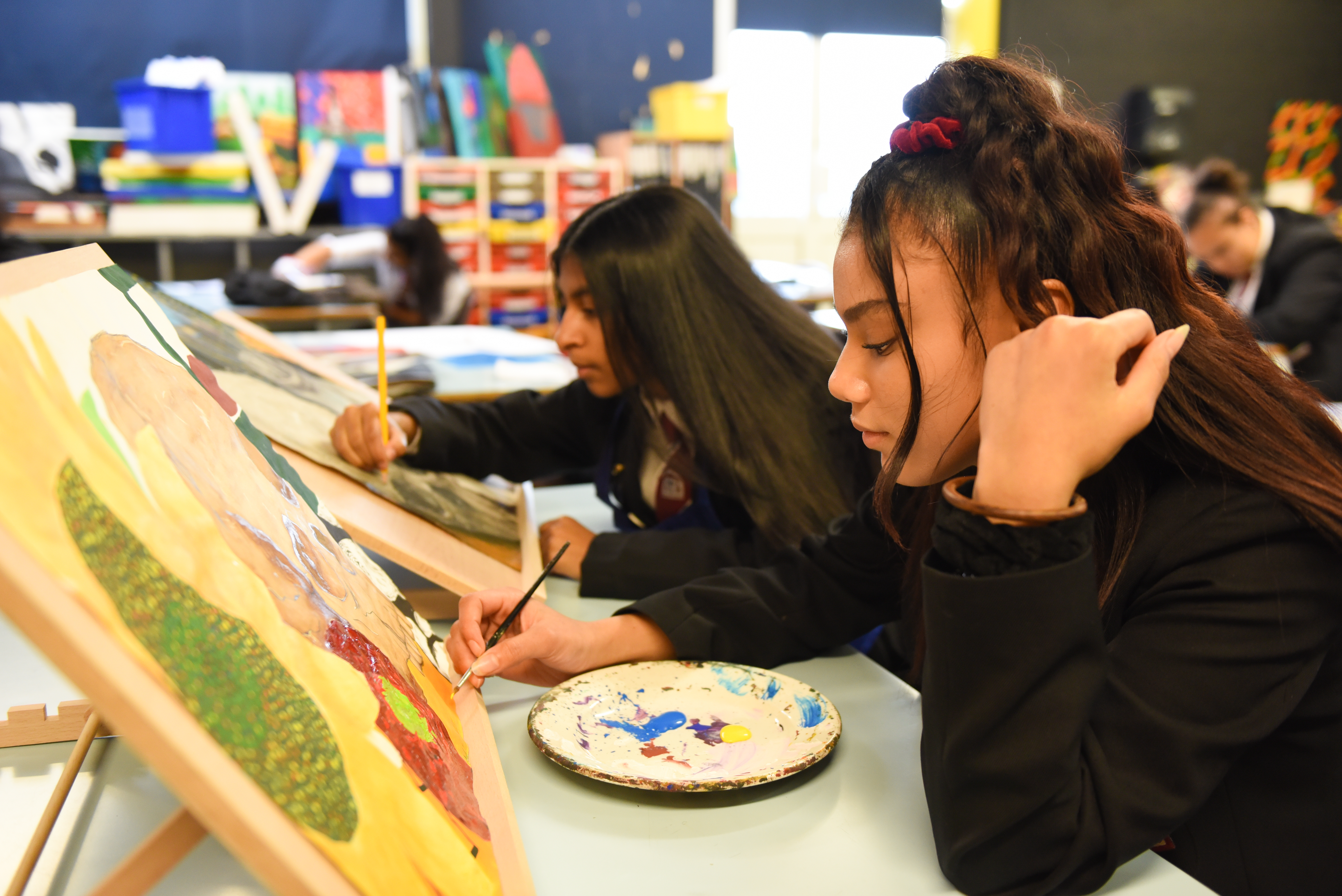Art is about personal expression, learning creative skills and developing imagination in a visual form.

What is Art?
Art is the expression and application of creative skill and imagination in a visual form.
Why is Art important?
Art has a vital role in allowing curiosity, creativity and self-expression to develop alongside resilience, confidence and critical thinking skills. Art encourages risk taking at a time when students are fearful of making mistakes and “failing”. The ability to take risks, accept and learn from “failures” and move on is widely recognised as being of benefit educationally, moving an individual from a fixed mind set to a growth mind set.
In life ‘knowing how’ is just as important as ‘knowing that’. Art, craft and design introduces participants to a range of intellectual and practical skills. It enables students to use and understand the properties of a wide range of tools, materials and mediums. Through these opportunities they learn to appreciate and value images and artefacts across times and cultures, and to understand the contexts in which they were made.
It provides children and young people with regular opportunities to think imaginatively and creatively and develop confidence in other subjects and life skills. These skills can transfer to other areas of the curriculum. For example, the exam level Assessment Objectives reward the development of ideas, exploration and experimentation, analysis of art forms and skills, and responding to experiences and observations. Analysing and interpreting past artworks develops abilities useful in the evaluation of sources in history. Exploring a range of processes and materials cultivates problem solving skills of benefit in the sciences. In forming art project rationales, skills relevant to English and once again history are nurtured.
Students learn to think and act as artists, makers and designers, working creatively and intelligently. They develop an appreciation of and engagement in art, craft and design as critical consumers and audiences and an understanding of its role in the creative and cultural industries that shape and enrich their lives.
What is the purpose of the subject?
The teaching of Art provides a unique opportunity to develop cultural awareness & empathy. Birmingham is an ethnically diverse city and Art provides a platform to discuss many different cultures, socioeconomic levels, and current events. Those less confident in purely academic subjects or with language barriers can express themselves fully through practical subjects.
Through Art, students have a place not only to learn about different cultures than their own, but also to ask questions and be more informed about the daily struggles and realities of people who may seem different. By learning about other people, children are able to develop their ability for empathy, for people from all walks of life, and realise that we have more in common than not. Introducing pupils to a wide range of art and artists including those from different periods and cultures, create world citizens with an understanding of how art impacts and enhances societies and our surroundings.
Kingstanding is an area of high deprivation in Birmingham with employment being below national average. The career pathways emerging from art, craft and design need to be taken into greater consideration. The latest figures from the DCMS, show that the creative industries now contribute over £84.1 billion a year to the UK economy with continual growth. The Heritage Lottery Fund announced new research showing that heritage based tourism is now worth £26.4 billion to the UK economy and rising. These findings are making arts graduate more employable than ever before.
In Art, Students learn to think and act as artists, craftspeople and designers working creatively and intelligently. Creative skills are valued and actively sought across a wide range of employment sectors, as employers are looking to recruit employees who are adaptable and can generate ideas.




